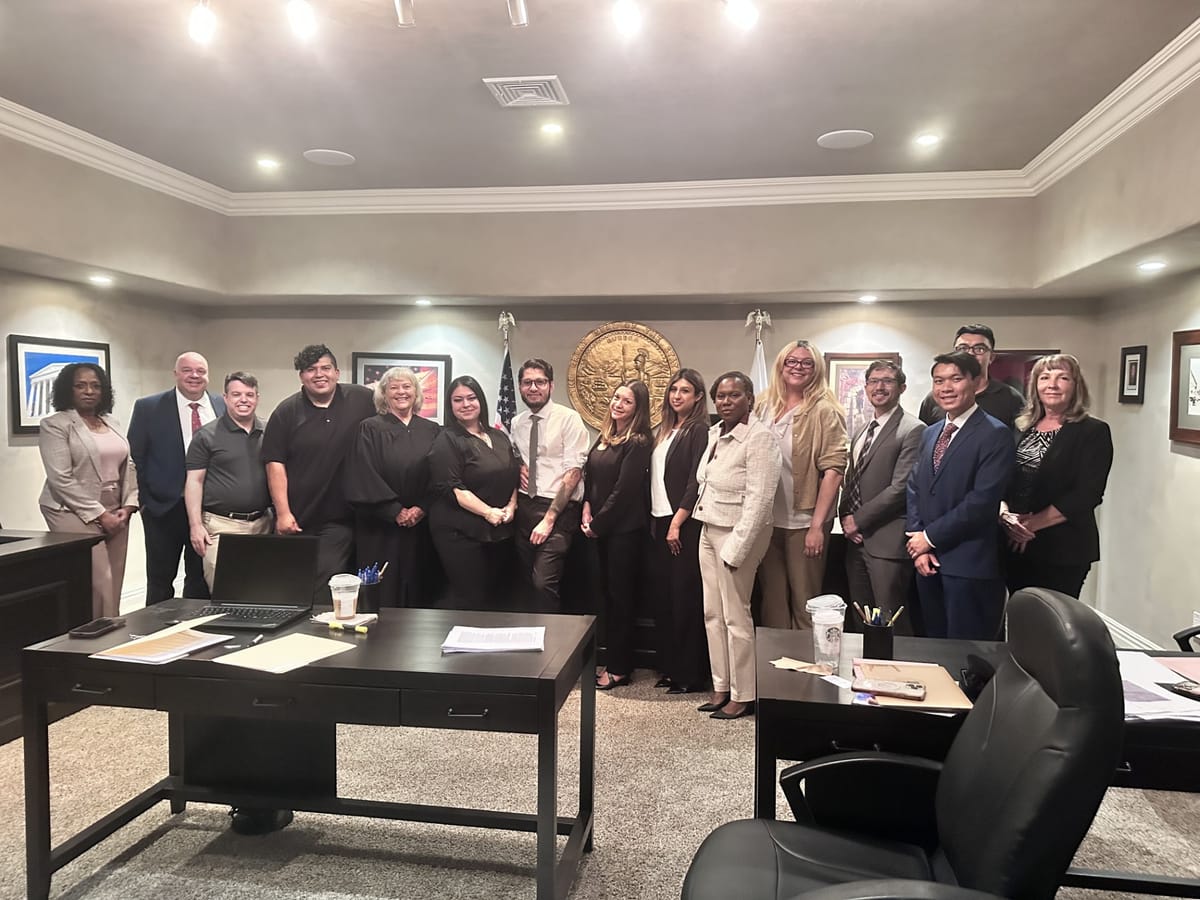
Law students Deia Davis, Jasmine Sekhon, Alex Yee, Jesse Nunez and Katherine Demirchyan capped off their summer internships at the Legal Aid Society of San Bernardino with a mock trial on Aug. 4.
This year’s fictional case, People v. Jamie Cobey, centered on the mysterious death of Erik Smith, a 70-year-old landlord in the fictional desert community of Burnsley, California.
Attorney William Shapiro sponsored the trial in his office. Retired San Bernardino Superior Judge Teresa Bennet presided, and Tess Ponce and Jacob Guerard mentored the teams.
The case revolved around allegations that Smith’s tenant, Jamie Cobey, deliberately orchestrated his death by placing a venomous Mojave rattlesnake in his mailbox. The prosecution argued that Cobey had both the motive and means, citing escalating conflicts, repeated utility shutoffs that endangered Cobey’s ailing mother and forensic evidence tied to snake-handling tools. The defense countered with a narrative of grief, strained circumstances, and reasonable doubt, contending that Cobey’s knowledge of desert wildlife did not equate to criminal intent.
Judge Bennet also took time between arguments to explain procedural rulings and trial dynamics, giving participants a rare opportunity to observe the balance between judicial impartiality and legal strategy.
Both teams engaged in pre-trial motions, over constitutional issues, including the admissibility of surveillance footage and physical evidence.
Sekhon, serving on the defense, argued a motion challenging the admissibility of surveillance footage obtained from a smart camera installed by the landlord, and later shared with law enforcement. Sekhon argued that the footage constituted a warrantless search and therefore violated Cobey’s Fourth Amendment protections.
Bennet found the footage admissible under the plain view doctrine. Smith, the now-deceased landlord, was not a government actor, and voluntarily provided the footage to law enforcement, she found.
Nunez, for the prosecution argued a motion to admit a pair of snake-feeding tongs as proof of Cobey’s means to commit the alleged crime.
Nunez and Demirchyan worked together to build a case around circumstantial evidence and motive. “The defendant had endured a bitter feud with Erik Smith for years,” argued Nunez, pointing to the power shutoffs that coincided with the death of Cobey’s mother. Demirchyan emphasized that Cobey’s possession of snake-feeding tongs and threats made at the funeral were evidence of premeditation.
The defense team, composed of Sekhon, Davis and Yee, challenged the reliability of surveillance footage, highlighted Cobey’s history as a gardener familiar with desert wildlife, and underscored the trauma of losing a parent under distressing circumstances. “This case is not about murder; it is about grief, hardship, and misunderstanding,” Yee said in closing argument.
Bennet did not issue a verdict. Instead, to deepen the interns’ understanding of legal practice, she invited audience members to share their impressions of the trial, the arguments presented and the broader themes of justice and fairness.
Bennet praised the participants for their preparation, poise, and ability to present sophisticated legal arguments.
The mock trial was the second annual one held by the Legal Aid Society of San Bernardino to end their summer intern program. Founded in 1958, the Legal Aid Society offers legal assistance in areas such as housing, family law, consumer rights, and public benefits.
*T. Dawn Lajoie is the Legal Aid Society of San Bernardino’s office manager.
